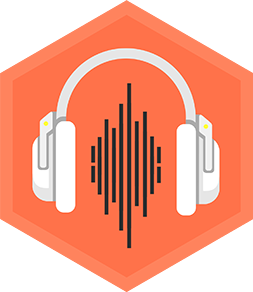Create a Song using live instruments
Compose and perform an original song with live instruments like ukulele, recorder, and percussion, arranging parts and practicing to present to family or friends.



Step-by-step guide to create a song using live instruments
Step 1
Warm up your voice and fingers by humming and playing easy notes for two minutes.
Step 2
Pick a mood or idea for your song like a happy beach day or a space adventure.
Step 3
Find a steady tempo by tapping a beat and counting "1 2 3 4" as you tap.
Step 4
Choose a simple ukulele chord progression of three or four chords and play it on loop.
Step 5
Make a short melody on the recorder or by singing and hum it until you remember it.
Step 6
Write a short chorus or a few lines of lyrics that match your melody using your pencil and paper.
Step 7
Decide a simple percussion pattern that fits the tempo you chose.
Step 8
Decide who will play each part: recorder or voice for the melody ukulele for the chords percussion for the rhythm.
Step 9
Practice each part by itself for three to five minutes focusing on steady timing.
Step 10
Rehearse the whole song together from start to finish three times and fix one thing that feels off.
Step 11
Perform your finished song for family or friends with confidence and fun.
Step 12
Share your finished creation on DIY.org
Final steps
You're almost there! Complete all the steps, bring your creation to life, post it, and conquer the challenge!


Help!?
What can we use if we don't have a ukulele or recorder?
If you don't have a ukulele, play the same three- or four-chord progression on a small guitar, keyboard, or a free ukulele app, and if you don't have a recorder sing the melody or use a recorder/synth sound from a smartphone app.
I'm losing the beat when rehearsing—how can we fix timing issues?
Use a metronome app or keep tapping and saying "1 2 3 4" aloud while practicing each part for three to five minutes, slow the tempo until timing is steady, and write chord changes on your pencil and paper to cue transitions.
How can we adapt the activity for younger or older kids?
For younger kids shorten warm-ups and practice to one minute, use a two-chord loop and clapping for percussion, and for older kids expand to four-chord progressions, add harmonies, and record multitrack takes on a smartphone while writing a longer chorus on paper.
How can we make the final performance more special or shareable?
Add a harmony line on the recorder or voice, create percussion from pots and spoons to match your chosen tempo, record a clean take during your three run-through rehearsals, and upload the finished song to DIY.org with notes about your mood and instruments.
Watch videos on how to create a song using live instruments
Let's create a kid's song with AI - A step by step guide
Facts about music composition for kids
🎼 Many hit songs use just three chords—learn a few basics (like C, G and Am) and you can play or write thousands of songs.
🎤 Performing for family and friends builds confidence and practice—short 3–5 minute shows give big boosts to stage skills.
🪈 The recorder goes back to medieval Europe and is a favorite in classrooms because its simple fingering makes learning tunes fast.
🪕 The ukulele usually has 4 strings and shot to global fame after Hawaiian musicians popularized it in the late 1800s.
🥁 You can build a full percussion section from household items—pots, cardboard boxes, and rice shakers all make great rhythms.
How do I help my child compose and perform an original song with a ukulele, recorder, and percussion?
What materials do we need to create a live-song performance using ukulele, recorder, and percussion?
What ages is composing and performing a simple live song suitable for?
What are the benefits and fun variations of composing and performing an original song with live instruments?


One subscription, many ways to play and learn.
Only $6.99 after trial. No credit card required


![How To Make A Song with Splice [Tips and Workflow]](https://img.youtube.com/vi/e1fQ1ap_EL8/mqdefault.jpg)
